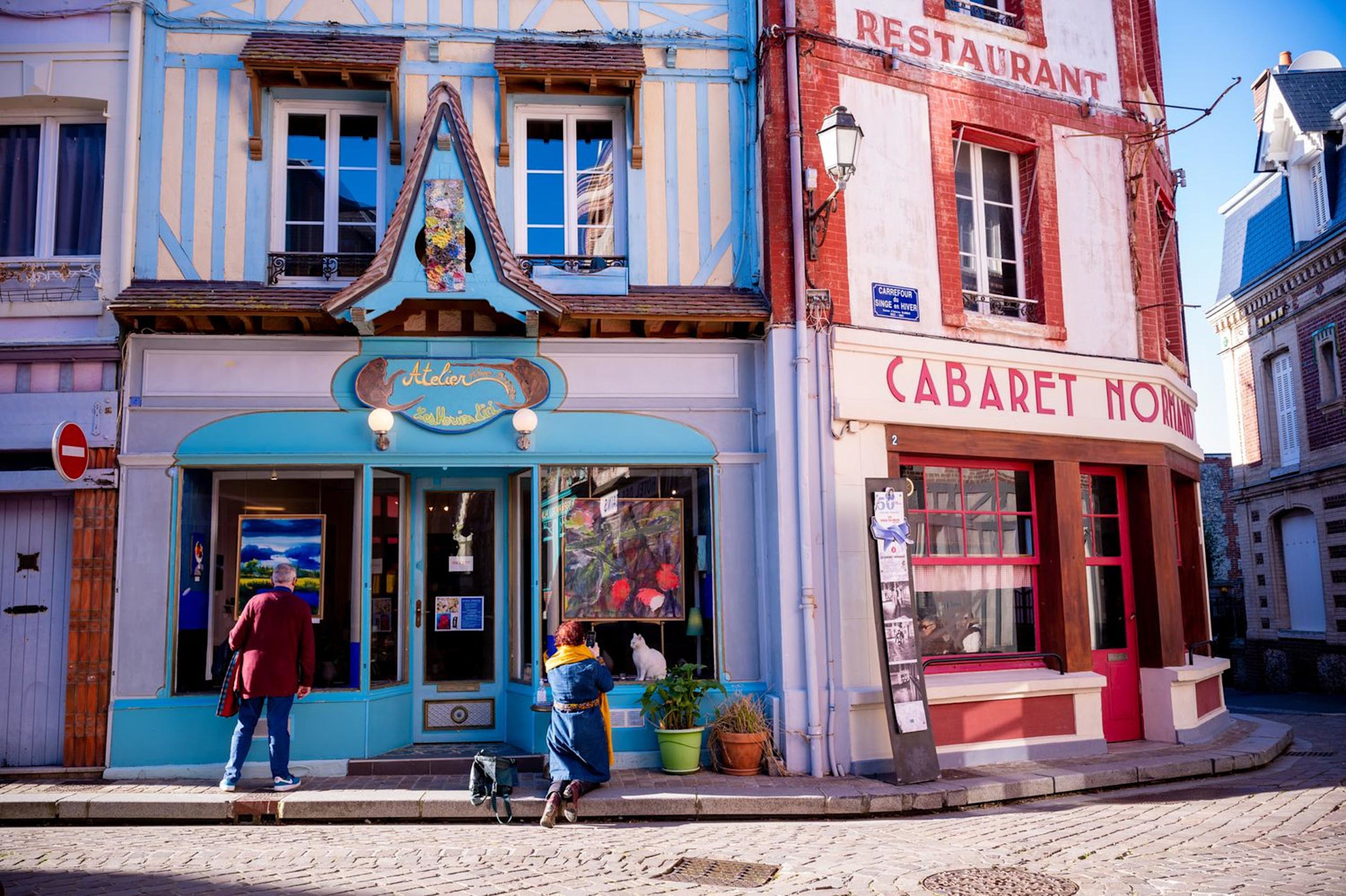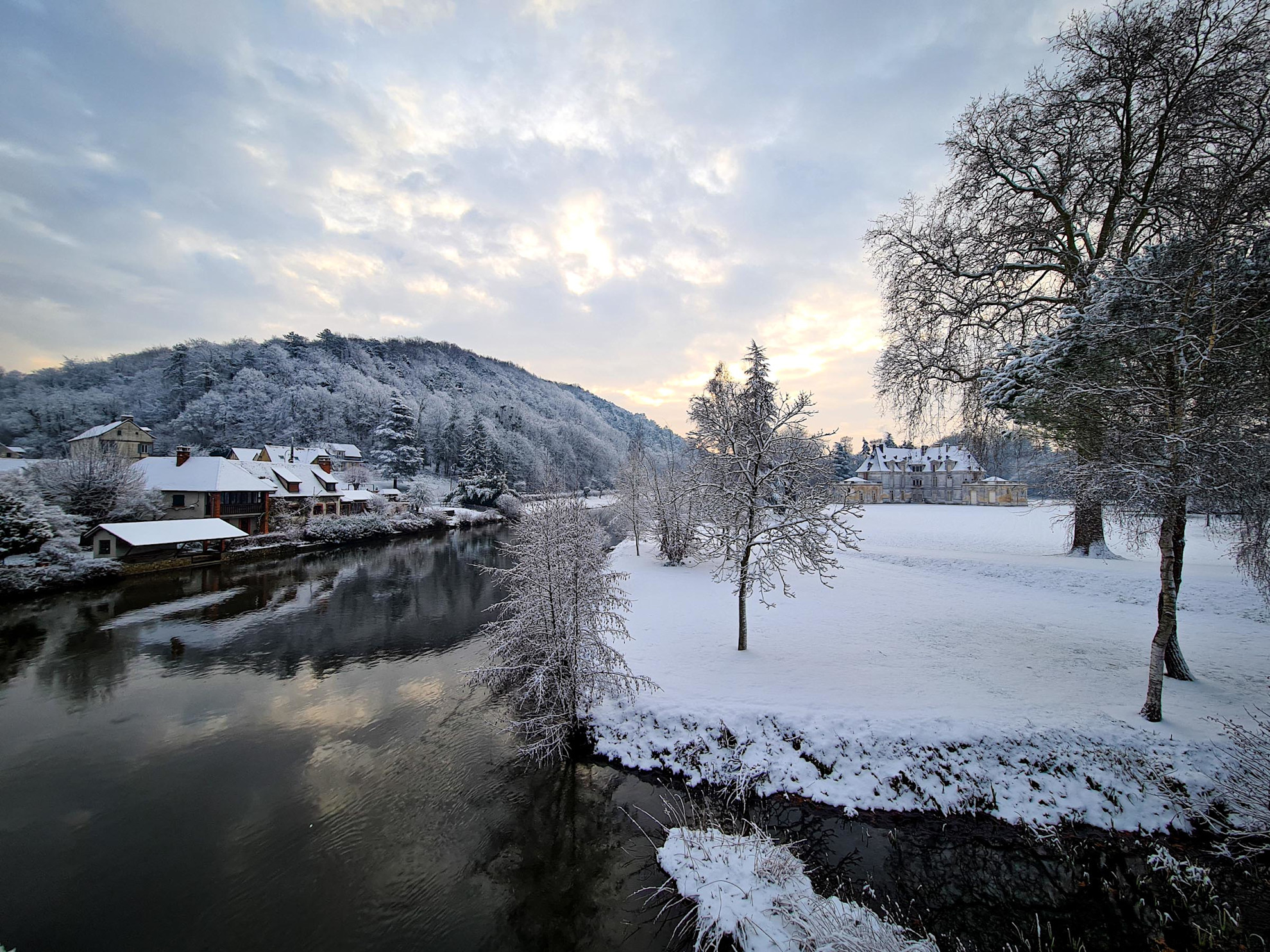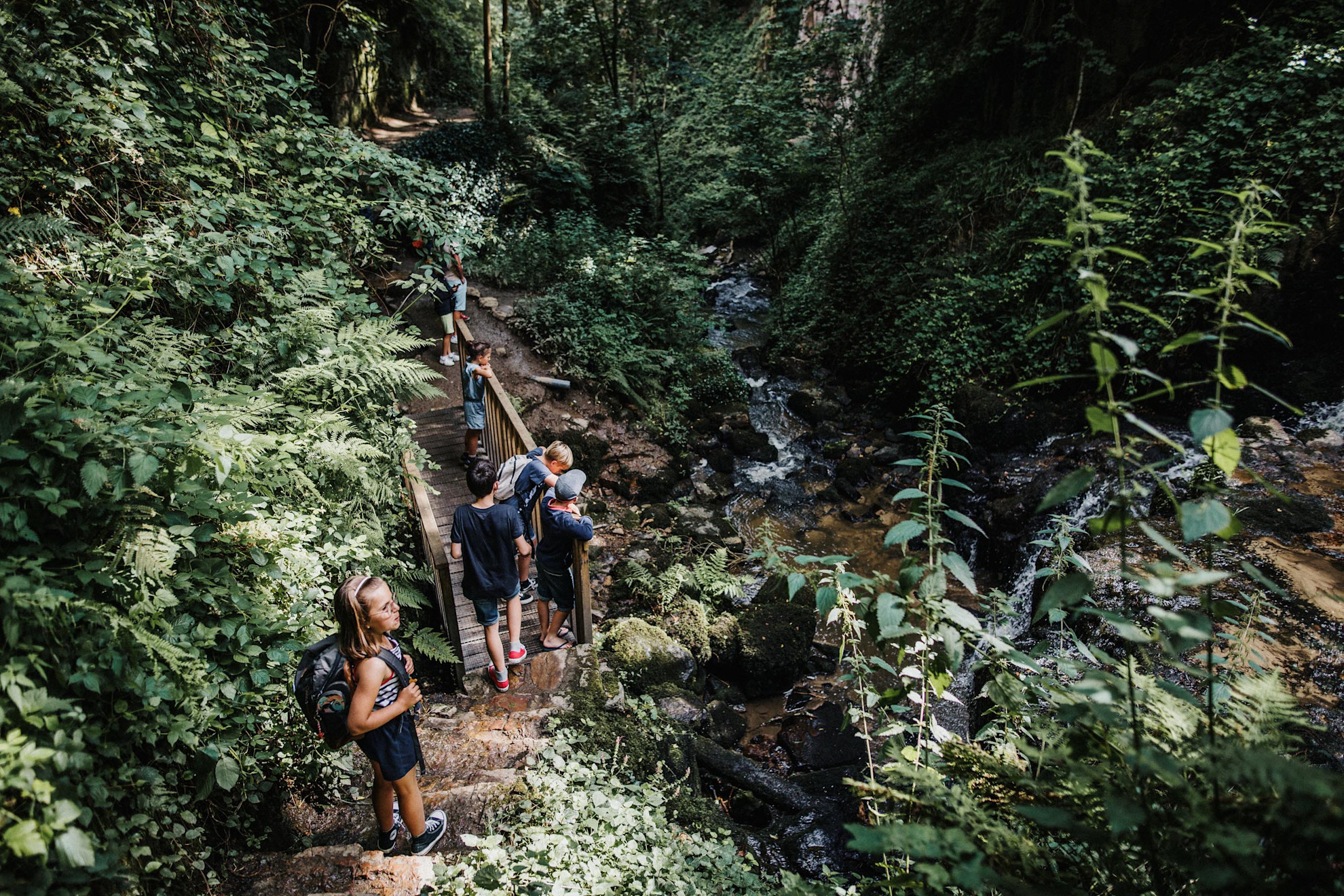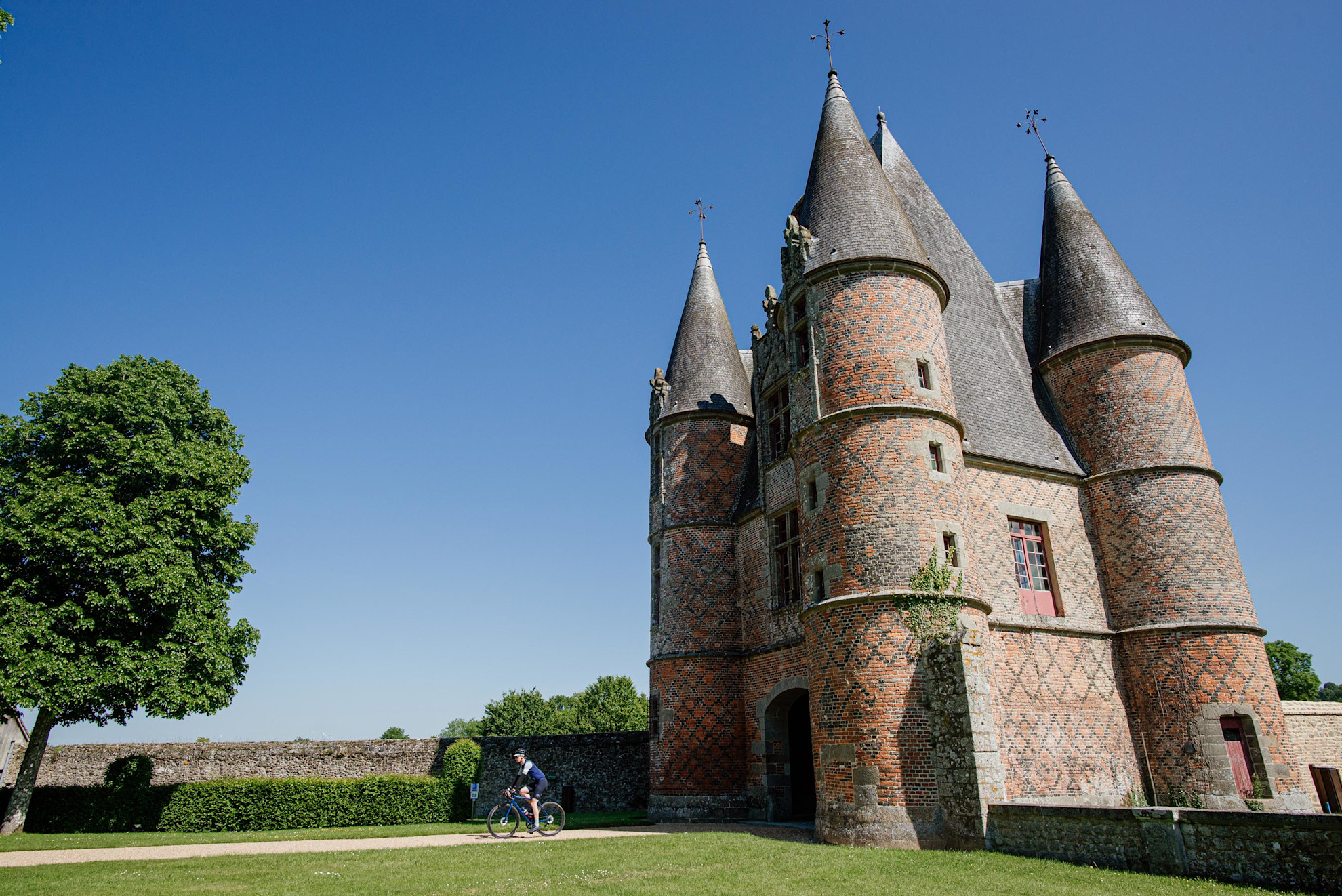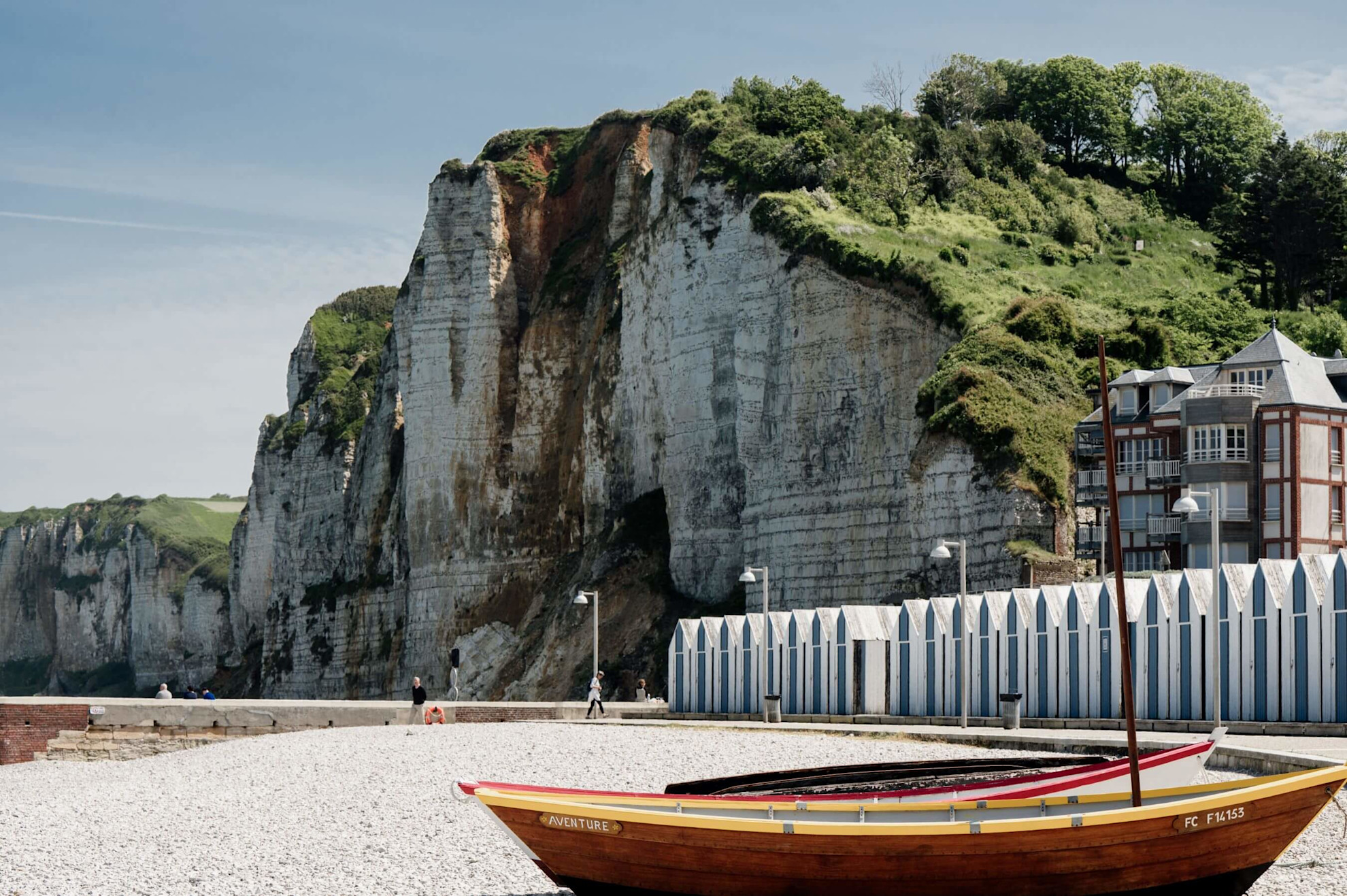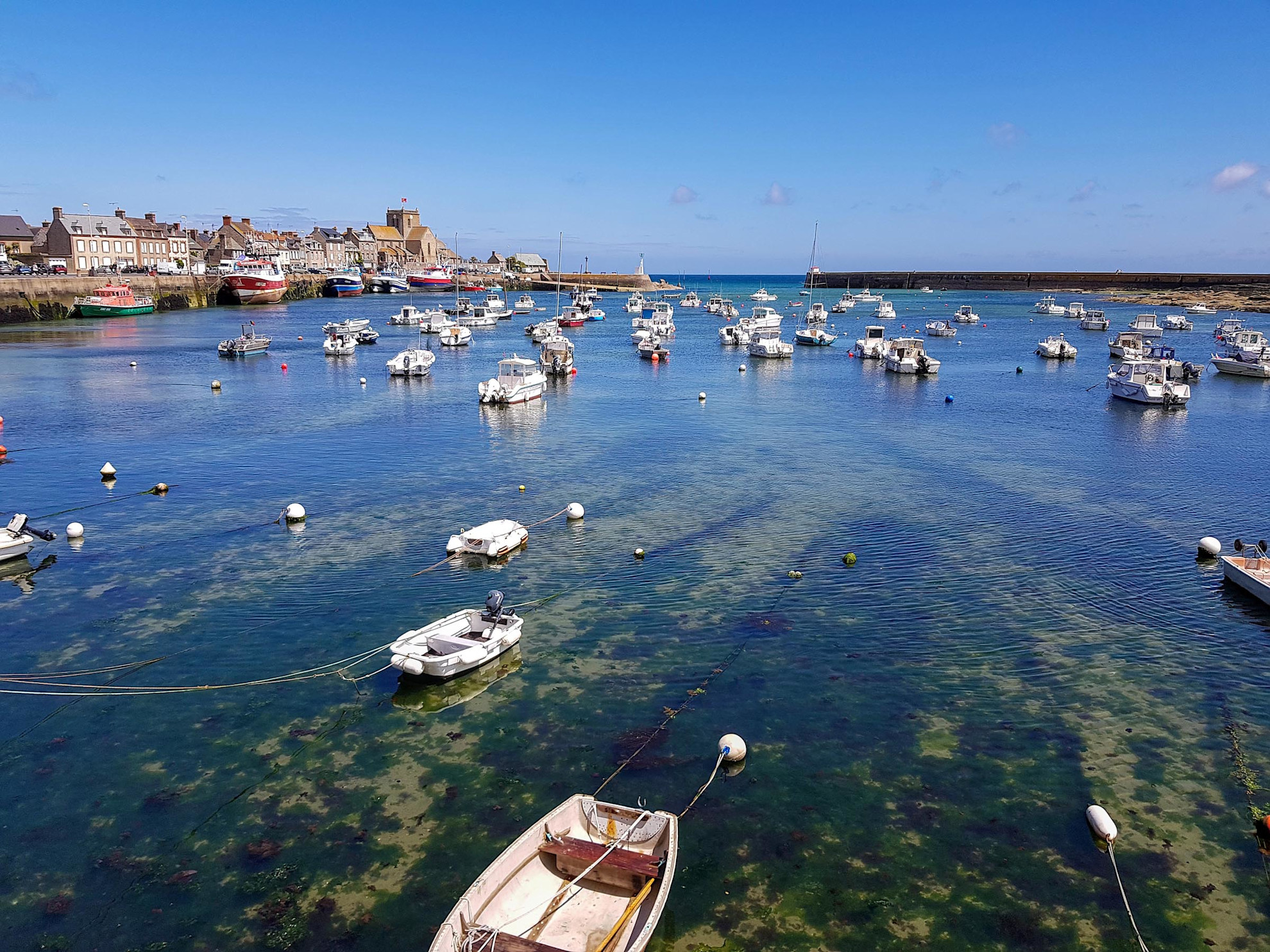
Hidden Normandy
Normandy is famed for a variety of reasons. Boasting a rich history and unique attractions that include the WW2 D-Day landing beaches, the Bayeux Tapestry and the magical Mont St Michel, it is no surprise that the region is globally renowned as a must-visit travel destination.
For those willing to wander off the beaten track, however, the area also contains a treasure trove of hidden gems and local secrets, unknown to the tourist masses.
CALVADOS
Villerville ©ThomasLeFloc-H
Orbec
In the heart of the Pays d'Auge, famous for its rolling hills and apple orchards, lies the quaint village of Orbec. With a particularly rich heritage, Orbec captivates visitors with its typical half-timbered houses, narrow streets and authentic atmosphere. Strolling through the streets of Orbec, visitors can discover half-timbered houses dating back to the Middle Ages, giving the village a unique character. Orbec is also an ideal base for exploring the Auvergne countryside, famous for its local produce such as camembert, cider and Calvados.
Villerville
Halfway between Honfleur and Trouville, the village of Villerville remains one of the best kept secrets of the Côte Fleurie (Flowered Coast). With its narrow streets, colourful houses and long sandy beach, this former fishing village has inspired many painters, musicians and photographers over the centuries. It was here that film-maker Henri Verneuil brought together Jean-Paul Belmondo and Jean Gabin in 1962 for his famous film Un singe en hiver.
Touques
Touques is a charming village, full of flowers and bustling all year round, close to two of Normandy's most famous seaside resorts: Deauville and Trouville-sur-Mer. With its streets and squares lined with flowers, its stream running alongside the houses and its half-timbered facades typical of the Pays d'Auge, Touques has preserved its history. In the heart of the village, the Quartier des Arts and the old presbytery make a lively artistic centre.
EURE
Acquigny in winter ©AliceLebas
Andé
This pretty village on the Seine is home to the Moulin d'Andé. Built at the end of the 12th century and now listed as a national historic monument, it is the only remaining waterwheel mill on the Seine to have preserved all its machinery. Since 1962, the Moulin d'Andé has been a cultural centre and has hosted many famous French artists, including Romy Schneider, François Truffaut and Jacques Dutronc. Concerts and shows are held in its theatre throughout the year. Set in 37 acres of parkland, there is also a hotel and conference facilities.
Bernay
Listed as a 'Town of Art and History', Bernay is full of charm with its cobbled streets, colourful half-timbered houses and medieval and Renaissance buildings. Notre-Dame Abbey, founded in the 11th century, is one of the jewels of the town. This remarkable monument of Romanesque architecture hosts exhibitions and cultural events throughout the year. Visitors can stroll along the Charentonne, the small river that runs through the town, have lunch in one of the restaurants on the picturesque rue Gaston Folloppe or take advantage of the local market to discover local Normandy produce.
Acquigny
Acquigny is a charming village with a remarkable historical heritage and a bucolic setting on the banks of the Eure and Iton rivers. The Château d'Acquigny, a magnificent Renaissance building surrounded by English-style gardens, is one of the jewels in the village's crown. With its elegant flowerbeds and centuries-old trees and ponds, it is the ideal place for a romantic stroll or a family outing. The castle is also famous for its orange grove, one of the oldest in France.
MANCHE
Mortain waterfalls trail ©Coraline et Léo
Valognes
Located in the heart of the Cotentin peninsula, the town of Valognes is known as the 'little Versailles of Normandy'. The town still boasts dozens of private mansions, including the remarkable Hôtel de Beaumont, which is open to visitors. Valognes is also home to the Musée Régional du Cidre (Regional Cider Museum), the richest collection in France devoted to the 'blond gold of the Normans'.
Mortain
As the gateway to the Normandie-Maine regional natural park, Mortain offers some remarkable landscapes: waterfalls, hedged farmland and sunken lanes, views as far as Mont-Saint-Michel and rock climbing. A land of legends and myths, once crossed by King Arthur, it boasts the highest waterfall in western France! The Grande Cascade is an impressive 25 metres high. A little further along the trail is the charming Petite Cascade, which is actually made of several waterfalls.
Portbail
Situated on the coast of Les Havres, opposite the Channel Islands, the commune of Port-Bail-Sur-Mer (its full name) is spanned by the port of Portbail, a vast natural bay where the sea cuts deep into the land, offering magnificent seascapes that change with the tides. Portbail is particularly popular for its fine sandy beaches and rich historical heritage. One of the must-see sights is the elegant thirteen-arched bridge that links the old town to the sea. Portbail offers an ideal setting for lovers of nature, history and tranquility and is a gateway to the Normandy coast and the Channel Islands.
ORNE
Château de Carrouges ©Marie-AnaïsThierry
Carrouges
Carrouges is a real gem in the heart of the Normandy-Maine Regional Natural Park. This peaceful village is best known for its impressive Château de Carrouges, a medieval fortress transformed into an elegant Renaissance residence. Surrounded by a moat and magnificent gardens, the castle is a must for history and architecture buffs. Its richly decorated salons, large kitchens and magnificent stone staircases bear witness to the refinement of the period. In addition to its architectural heritage, Carrouges is an ideal base for exploring the vast landscapes of the Regional Natural Park, offering numerous opportunities for walking and cycling.
La Perrière
The picturesque village of La Perrière is built on a hill at the edge of the Bellême Forest, one of the most beautiful forests in the Perche region. The streets of this thousand-year-old village are lined with beautiful buildings full of character, antique shops and tearooms. La Perrière is home to many artists of different nationalities who appreciate the gentle way of life here.
Sées
A hospital town during the Battle of Normandy in 1944, Sées was spared the bombings. The cathedral still towers majestically over the surrounding plains. Its spires are 70 metres high and can be seen for miles around. At its foot, the old town is a maze of streets and alleyways where you'll enjoy wandering between old houses and private mansions.
SEINE-MARITIME
Plage d'Yport ©Marie-AnaïsThierry
Clères Halfway between Rouen and Dieppe, Clères is a quiet and relaxing destination. Crossed by the river Clérette, the village is famous for its Parc de Clères, a remarkable zoological and botanical park with a magnificent 11th-century castle at its heart. A few kilometres from the village is the Parc du Bocasse, one of the oldest amusement parks in France.
Yport
Nestled in a green valley in the heart of the Alabaster Coast, Yport is Étretat's little sister, where fishermen's cottages and holiday homes stand side by side. Immortalised by many Impressionist painters, this picturesque seaside resort is full of charm with its pretty beach huts, brick and flint houses with flower-filled courtyards and its beautiful Anglo-Norman town hall.
Puys
Just two kilometres from the centre of Dieppe, Puys beach is one of the best kept secrets of the Alabaster Coast. Nestled in beautiful chalk cliffs, this small cove is mainly frequented by locals. The beach is dominated by elegant houses, including the last residence of the famous writer Alexandre Dumas.

Getting to Normandy
Get closer to your destination with our routes sailing direct into Normandy


